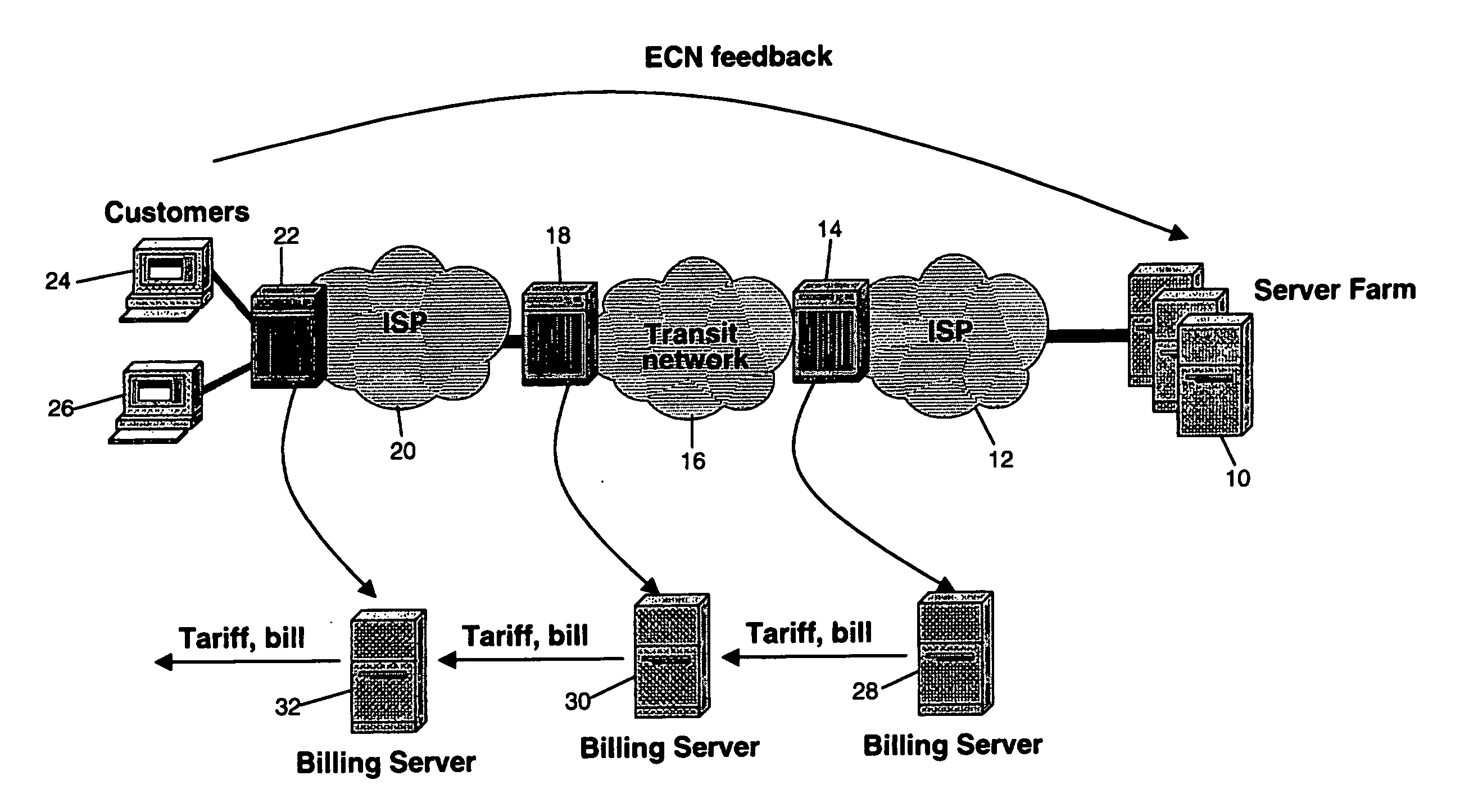Inter-domain congestion charging
a congestion charging and inter-domain technology, applied in the field of network operation methods, can solve problems such as inpracticability, and achieve the effects of convenient scalability of ecn charging, convenient operation of congestion charging schemes, and convenient operation
- Summary
- Abstract
- Description
- Claims
- Application Information
AI Technical Summary
Benefits of technology
Problems solved by technology
Method used
Image
Examples
Embodiment Construction
[0053]FIGS. 1 and 2 are stylised diagrams which provide an overview of the operation of the embodiments of the invention. FIG. 2 differs from FIG. 1 in that it illustrates the situation where traffic is being sent in both directions over the various networks, whereas FIG. 1 illustrates the simpler situation where traffic is being sent in one direction.
[0054] With reference to FIG. 1, the operating environment of the embodiments of the invention where traffic is being sent in a single direction comprises a server farm 10 which constitutes the source of the traffic, a first ISP network domain 12 provided with an egress route 14, a transit network domain 16 connected to the egress router 14 of the first ISP network domain 12, and a second egress router 18 provided as part of the transit network 16. A second ISP network domain 20 is connected by the egress router 18 of the transit network 16, and is further provided with its own egress router 22 which connects the second ISP network do...
PUM
 Login to View More
Login to View More Abstract
Description
Claims
Application Information
 Login to View More
Login to View More - R&D
- Intellectual Property
- Life Sciences
- Materials
- Tech Scout
- Unparalleled Data Quality
- Higher Quality Content
- 60% Fewer Hallucinations
Browse by: Latest US Patents, China's latest patents, Technical Efficacy Thesaurus, Application Domain, Technology Topic, Popular Technical Reports.
© 2025 PatSnap. All rights reserved.Legal|Privacy policy|Modern Slavery Act Transparency Statement|Sitemap|About US| Contact US: help@patsnap.com



